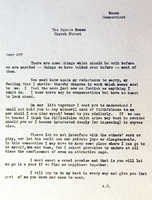Items
Site
The Medicine Chest
keywords is exactly
hermetic
-

The virus (dormant)
"When it (the chest) is not being exhibited in the Iziko South African Museum, it lives in the archives of the University of Cape Town. As part of an institution that has sworn dedication to decolonising its curriculum, it poses a somewhat latent threat. In a speech in 2015, the writer and previous vice-chancellor of the University of Cape Town, Professor Njabulo Ndebele, stated "that there can be no transformation of the curriculum, or indeed of knowledge itself, without an interrogation of archive". It is an argument which strongly suggests that a critical assessment of the archival legacy on which the institution is founded becomes of pivotal importance when developing a decolonial institution. What worth then, if any, does this dormant object serve in a new curriculum?" Extract from a paper delivered at the BSHS conference in Cambridge, 2019 -

Condensation Cube
"One of Hans Haacke’s earlier works. While over time the artist developed a critique of art as an institution and system, these early works focus on art in the sense of process and physical system. Interested in biology, ecology and cybernetics, in the mid-sixties Haacke was influenced by the ideas of Ludwig von Bertalanffy, especially those outlined in his General System Theory of 1968. For the Austrian biologist and philosopher, a living organism is an open system that continuously changes depending on its dialogue or interaction with the environment. Haacke’s early works, such as Condensation Cube, transpose this concept to the realm of art" (MACBA 2021). -

Modest_ Witness@Second _Millenium
Boyle's 'New Experiments Physico-Mechanical Touching the Spring of the Air', which describes experiments with an air-pump, recounts a demonstration attended by high-born women at which small birds were suffocated by the evacuation of the chamber in which the animals were held. Since the ladies interrupted the experiments by demanding that air be let in to rescue a struggling bird, Boyle reported that “to avoid such difficulties, the men later assembled at night to conduct the procedure and attest to the results” (Haraway 2004: 232). -

Amelia's letter
Amelia Earhart sat down on the morning of February 7th, 1931, and penned this letter to her publicist and future husband, George Putnam: "Please let us not interfere with the others’ work or play, nor let the world see our private joys or disagreements. In this connection I may have to keep some place where I can go to be myself, now and then, for I cannot guarantee to endure at all times the confinements of even an attractive cage".


